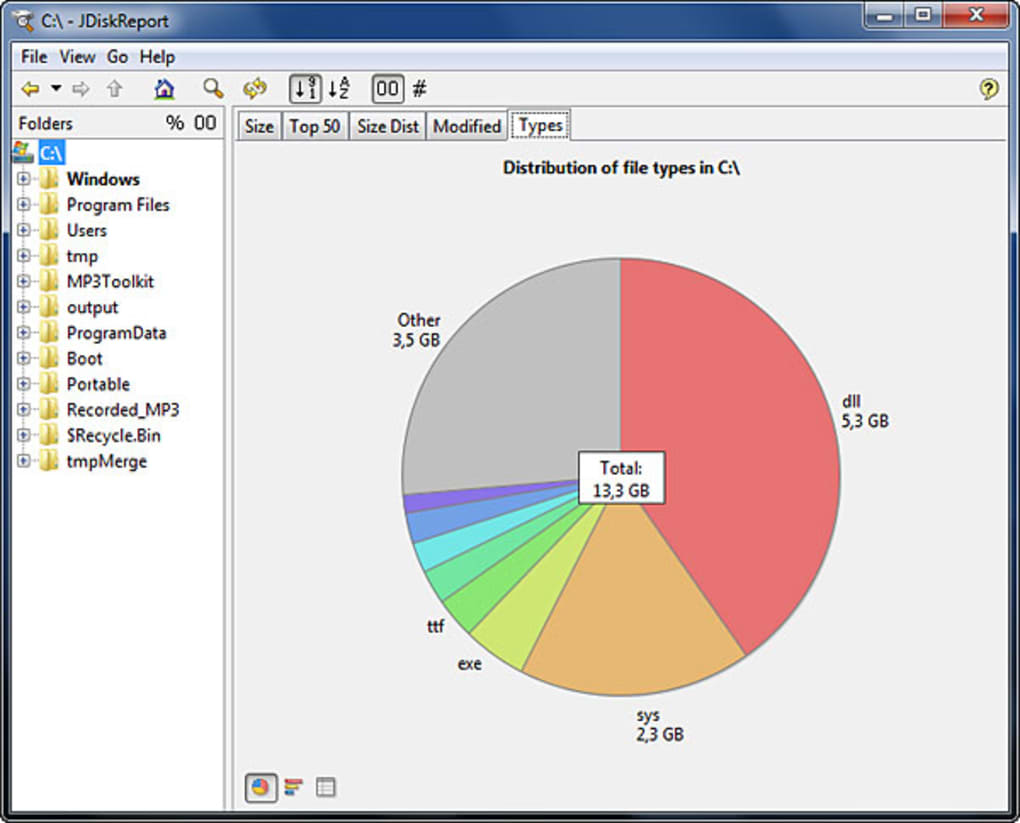

- #Like jdiskreport how to#
- #Like jdiskreport install#
- #Like jdiskreport software#
- #Like jdiskreport series#
The Options include Look & Feel, Filters, and Commands. We could change the views from file size to numbers, sort by size and name, and copy the table to the clipboard from the View menu. dlls than any other file type 11.5GB of them. All the views are useful under Types, we learned our system had more.
#Like jdiskreport series#
Some displayed pie charts and others bar graphs, but each offered a series of icons along the bottom of the main window for switching between several chart, graph, and list styles, except the Top 50 list view, which switches between Largest, Oldest, and Newest. JDiskReport displays a folder tree view in the left-hand panel and five tabs in the main window: Size, Top 50, Size Distribution, Modified, and Types. JDiskReport starts by scanning either a selected tree directory or your C drive we chose the latter. To use it, you must have an up-to-date version of Java installed, but of course that's free. You can display data in different views and rapidly switch between them.
#Like jdiskreport install#
These are the command you can use to install it.JDiskReport is a free Java-based tool that displays the size, capacity, free space, and other parameters of your files, folders, and directories. NCDU is simple, fast and can run in any POSIX-like environment. And find out about disk usage where no desktop environment is available. I think it’s perfect for those use cases where you need to log in via SSH or remotely to a server. It’s an acronym for NCurses Disk Usage, which scans your system and provides you with an excellent terminal re-presentation of disk space status. If you are comfortable in the Terminal, then you should always try NCDU. sudo apt install default-jre Bonus App: NCDU
#Like jdiskreport how to#
If your Ubuntu Linux Mint system does not have Java run-time, install using the below command, or check out our guide on how to install Java in Ubuntu Linux. JDiskReport requires Java run-time to work.

JDiskReport Running in Ubuntu How to Installĭownload JDiskReport from the below link and extract.

Also, it has the flexibility to run via a command line and can be plugged into the web using CGI.Īs per the documentation, DUC can also handle file systems with millions of files on petabytes of storage. Like Filelight, DUC also shows the visualization in a sunburst presentation.ĭUC has some unique features, such as it comes with specific tools that enable you to query its internal database of disk data which it collected after analysis. “Dude! Where are my bytes!” – That’s the tagline of DUC – another disk usage visualization tool. Set up your application for Flatpak & Flathub repo, and then run the following to install it for all the supported Linux distributions. sudo apt install filelightĪlso, you can install it via Flatpak. You can run the below commands from the terminal to install Filelight in all Ubuntu versions and Linux Mint.
#Like jdiskreport software#
Open the software and search for Filelight. Files and directories can be copied or removed directly from the context menuįilelight Running in Ubuntu How to Install Filelightįilelight is available in Ubuntu software.Information about files and directories on hovering.It also provides a way to dive deep into a particular segment to a single file level to analyze! This feature is pretty neat. You can mouse over to a specific colour/pie to get the information about that specific segment. Instead of showing a tree view & list view of directories/files, it shows the usage in a concentric pie chart view representing each directory. Filelightįilelight, a GUI-based KDE app, provides a sunburst representation of disk usage. Five GUI Apps for Visual Disk Usage in Ubuntu and Other Linuxįive GUI Apps for Visual Disk Usage in Ubuntu and Other Linux 1.


 0 kommentar(er)
0 kommentar(er)
